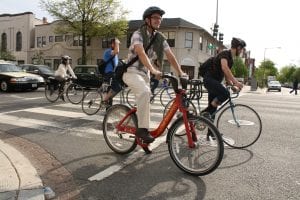 It’s no surprise that exercise is good for us. There is a significant body of evidence that demonstrates a wide range of benefits to regular physical activity. This includes improved cardiovascular health, stronger bones, reduced risk of developing cancer, increased likelihood of maintaining a healthy weight, better sleep, fewer mental health problems and an overall higher quality of life.
It’s no surprise that exercise is good for us. There is a significant body of evidence that demonstrates a wide range of benefits to regular physical activity. This includes improved cardiovascular health, stronger bones, reduced risk of developing cancer, increased likelihood of maintaining a healthy weight, better sleep, fewer mental health problems and an overall higher quality of life.
Unfortunately, a new sweeping review conducted by the World Health Organization finds that people across the globe aren’t getting enough exercise.
Researchers pooled data from 358 surveys in 168 countries. Nearly 2 million people are represented in the study. Here are some key conclusions:
- 28 percent of adults across the globe do not exercise. That number has remained steady since 2001.
- Women are more likely to be physically inactive than men. Across the globe, 32 percent of women do not exercise compared to 23 percent of men.
- In general, people living in countries with higher average incomes tend to exercise less compared to people in countries with lower average incomes. In countries classified as low-income, 16 percent of people are inactive. In middle-income countries, 26 percent of people do not exercise and in high-income countries, 37 percent of people do not exercise. Researchers found that people in wealthier countries are more likely to work at sedentary jobs and used motorized transportation, while people in lower-income countries are more likely to have physically-demanding jobs and walk or bike to work.
- Certain regions had higher levels of inactivity compared with the rest of the globe. The highest level was found in Latin America and the Caribbean, where 39 percent of people are inactive. Next, in high-income Western countries, 37 percent of people did not exercise. And in high-income Asian countries, 36 percent of people did not exercise.
- Despite these regional trends across the globe, activity levels vary drastically within individual countries and even regions within a country. The data suggests that factors at the community level—such as sports programs, exercise facilities, and road patterns—influence how much people exercise.
As a result of the study, the World Health Organization has developed a plan to encourage physical activity across the globe. The idea is to promote physical activity across systems in communities. This means creating safe routes for people to walk and bike instead of using motorized transportation, sponsoring events that encourage people to be active, improving physical education and encouraging people of all ages to become active, and much more.
What does all of this mean for you? If you can find a way to get your body moving, it will improve your overall health and well-being. Research finds that any activity at all is helpful. But the U.S. government recommends five hours a week of moderate activity, such as walking, or two and a half hours a week of vigorous activity, such as running.
This time can accumulate over the course of your day. For example, you could walk during your lunch break at work, and then come home and go for a bike ride around your neighborhood for 20 minutes. Small bursts of activity, such as always climbing the stairs to your office or parking at the back of the parking lot, can help you log more active hours. Here’s the bottom line: No matter your age or fitness level, it’s important to keep moving!
Please visit Cornell University’s Bronfenbrenner Center for Translational Research’s website for more information on our work solving human problems.



Speak Your Mind